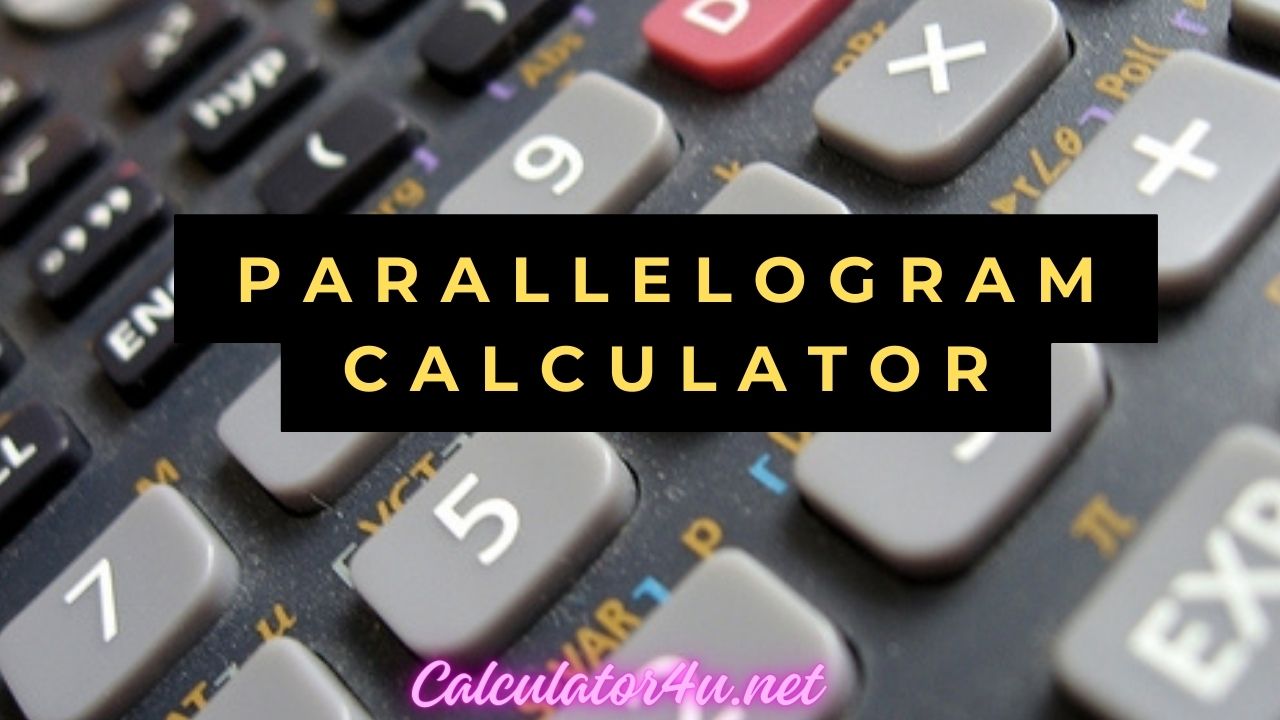Parallelogram Calculator
- Parabola Graph Calculator
- Palindrome Checker Calculator
- Ordering Fractions Calculator
- Order Of Operations Calculator
Parallelogram Calculator with Steps
Effortlessly calculate various properties of parallelograms using our calculator. Learn how to input measurements and interpret results accurately. Simplify your parallelogram calculations now!
Table of Contents
Parallelogram Calculator
Welcome to our Parallelogram Calculator guide. Parallelograms are quadrilateral shapes with opposite sides that are parallel and equal in length. In this article, we’ll explore how to use the Parallelogram Calculator to solve parallelogram properties efficiently.
Parallelogram Calculator Overview
Understanding Parallelograms
A parallelogram is a quadrilateral with two pairs of opposite sides that are parallel and equal in length. Parallelograms have several unique properties, including opposite angles being equal and consecutive angles being supplementary.
Importance of Parallelogram Calculations
Calculating parallelogram properties is important in various contexts, including:
- Geometry: Analyzing the relationships between sides, angles, and diagonals of parallelograms.
- Engineering: Designing structures with parallelogram-shaped components.
- Architecture: Incorporating parallelogram motifs into building designs for aesthetic appeal.
How the Calculator Works
Our Parallelogram Calculator provides a user-friendly interface for solving various properties of parallelograms. Simply input the necessary measurements, and the calculator will compute the desired properties, such as area, perimeter, and diagonal lengths.
Step-by-Step Guide to Using the Calculator
- Enter Measurements: Input the relevant measurements, such as side lengths and angles, into the designated fields.
- Select Calculation: Choose the property you want to calculate, such as area, perimeter, or diagonal lengths.
- Compute Result: The calculator will analyze the input measurements and compute the desired property of the parallelogram.
- Review Output: Examine the calculated property displayed by the calculator, along with any additional information provided.
Practical Applications
Calculating parallelogram properties has practical applications in various scenarios, such as:
- Carpentry: Determining material requirements for constructing parallelogram-shaped objects.
- Land Surveying: Measuring areas of land parcels with parallelogram boundaries.
- Graphic Design: Creating parallelogram-shaped graphics and logos for branding purposes.
Advantages of Using the Calculator
- Accuracy: Provides accurate calculations of parallelogram properties based on input measurements.
- Efficiency: Saves time and effort by automating the process of solving parallelogram properties.
- Versatility: Can handle a wide range of parallelogram configurations and measurement units.
FAQs
Q: What are the properties of a parallelogram?
A: Parallelograms have properties such as opposite sides being parallel and equal in length, opposite angles being equal, and consecutive angles being supplementary.
Q: How do you find the area of a parallelogram?
A: The area of a parallelogram can be calculated by multiplying the length of one of its sides by the perpendicular distance (height) from that side to its opposite side.
Q: Can a parallelogram have a right angle?
A: Yes, a parallelogram can have one or more right angles, in which case it is called a rectangle or a square.
Q: What is the formula for the perimeter of a parallelogram?
A: The perimeter of a parallelogram is the sum of the lengths of all its sides.
Q: Can the calculator handle non-standard parallelogram configurations?
A: Yes, the calculator can compute properties for parallelograms with various side lengths, angles, and diagonal measurements.
Conclusion
In conclusion, the Parallelogram Calculator offers a convenient and efficient solution for solving parallelogram properties. By following the steps outlined in this guide and utilizing the calculator’s features, you can easily analyze and understand the characteristics of parallelograms.

